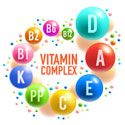News from the world of jurisprudence - vitamin designations!
Disguising the quality of food - now sanctioned by the state
Disguising the quality of food - now sanctioned by the state

Diplomökotrophologe mit FOM Diplom Orthomolekulartherapie.
Today appeared in Newsletter from the Federal Office for Consumer Protection and Food Safety & nbsp; a contribution that I think is quite memorable ... see the original text below. < / p>
Actually it is in the LMIV and in the Food Supplements Ordinance precisely regulates how a substance must be designated. See also our info page: & nbsp; https://www.energyvital.de/vit-min-erlaubte-stoffe
There is no such thing as "vitamin C" or "iron", but every vitamin or mineral must be added in a chemical form to a food supplement, for example enables the body to absorb the substance. There are good and less good connections, both in terms of absorption and tolerance in the gastrointestinal tract.
See also our blog post: The quality of food supplements .
Often there is a direct cost / benefit relationship: expensive ingredients are very well absorbed, cheap ingredients are poorly absorbed or cause nausea after ingestion, for example.
It is logical that manufacturers like to "cheat" here, ie rather write "vitamin B12" in the list of ingredients if only cheap cyanocobalamin is contained. Or "vitamin C" instead of ascorbic acid, since one & nbsp; otherwise you would have to admit that the cheapest chemical form of vitamin C is used instead of, for example, high-quality natural vitamin C from acerola.
For me as a professional, it is always exciting and entertaining when I research what very expensive food supplements that are particularly popular with customers are made of. & nbsp; Many will know this from magazines, tips from friends or coffee trips: completely overpriced products, where the list of ingredients (if any) only contains e.g. vitamin C and vitamin B12 instead of the actual names.
I have classified this practice as fraudulent so far. Unfortunately, the Federal Office now teaches me a better ... (or worse ...)
In my shop, customers can be sure that the ingredient lists 1. are as complete as possible and 2. I avoid this obfuscation as much as possible!
Appendix
Published in the Journal of Consumer Protection and Food Safety
J Consum Prot Food Saf (2019). https://doi.org/10.1007/ s00003-019-01252-2
https://link.springer.com/article/10.1007/s00003-019-01252-2 < / span>
Statement of the working group of food chemical experts of the federal states and the Federal Office for Consumer Protection and Food Safety (ALS)
On the basis of § 8 No. 6 of the rules of procedure, the working group of food chemical experts of the federal states and the Federal Office for Consumer Protection and Food Safety (ALS) publishes the 113th meeting from April 8th - 10th, 2019 in Hamburg, approved technical opinion:
Statement No. 2019/18:
Description of vitamins
Facts / question:
According to Art. 18 Paragraph 2 of Regulation (EU) No. 1169/2011 (LMIV), the ingredients of a food must be specified in the list of ingredients with their special designation according to Art. 17 Paragraph 1 LMIV. < / span>
Is this requirement fulfilled by using the term "vitamin [...]"?
Decision :
According to Art. 17, Paragraph 1 of Regulation (EU) No. 1169/2011 (LMIV), the" customary description "is the description of the food if a legally prescribed description is missing. This is true in the case of vitamins that are used as an ingredient in the manufacture of food.
The working group sees the names for vitamins listed in Annex II of Regulation (EC) No. 1925/2006 not as legally prescribed, but rather as possible names.
The "customary designation" is a designation according to Art. 2, Paragraph 2, Letter o) of the LMIV, which is used by consumers in the Member State in which the food is sold is accepted as the name of that food without further explanation being necessary. The designation "VITAMIN [...]" fulfills this requirement.
Regardless of this, the specific name of the vitamin compound is of course also a permissible specification in the list of ingredients.
This statement (No. 2019/18) replaces statement No. 2014/42.
